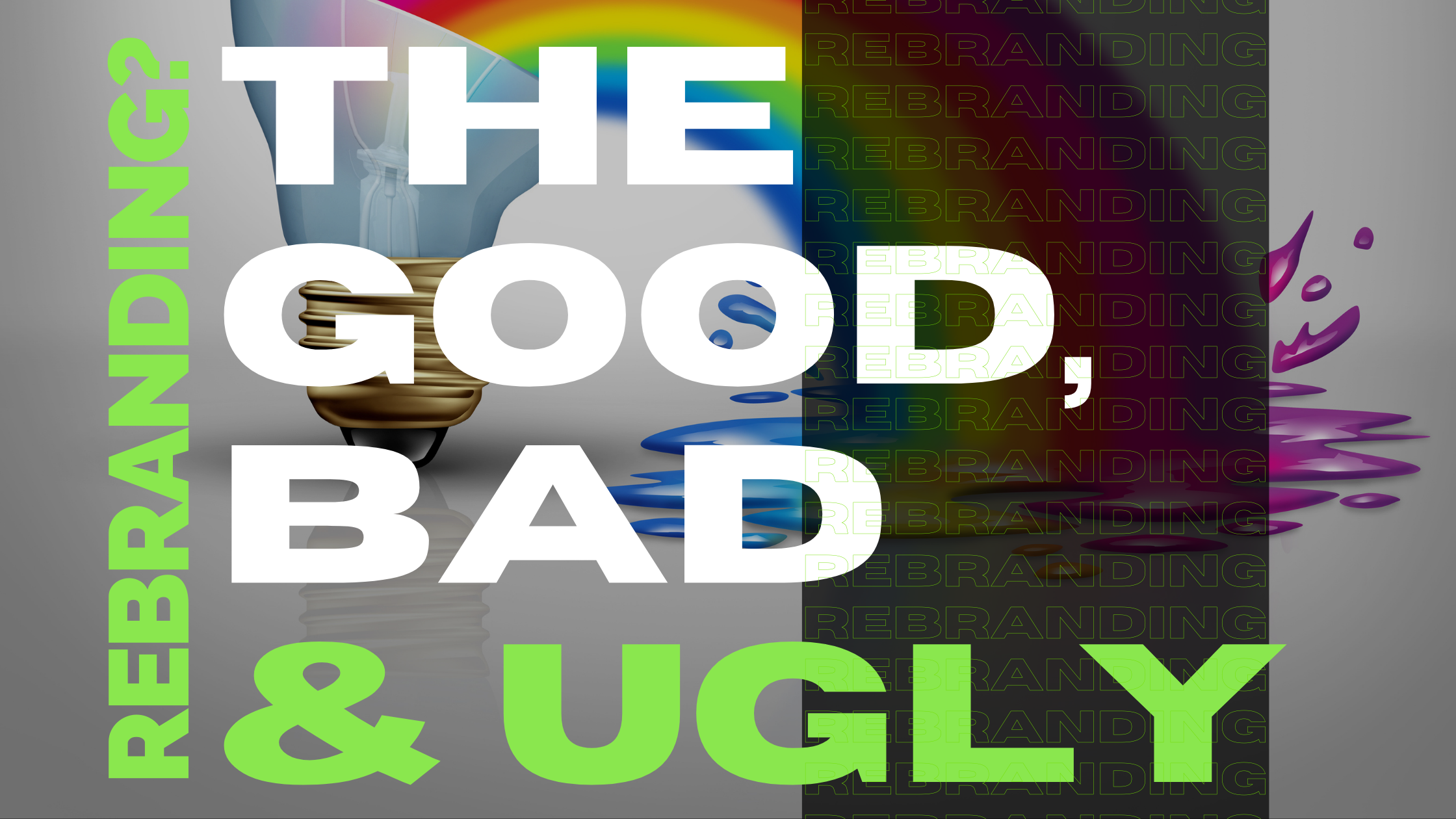Dreaming of a rebrand?
Maybe you’re thinking about how excited your customers will be when you unveil it all. Designers today drool over the prospect of overhauling a brand; all those design concepts, fresh new color pallets, a modern logo expressing brand power, and the promise of tantalizing assets that beckon you to get acquainted with it all.
Marketers get energized by the challenge of updating a company’s image, establishing new messaging that’s on point with the brand’s ethos. How artfully craft it so that it resonates with prospective buyers. Meanwhile, the executives behind the company doing the rebranding clutch their hearts (and their wallets) as they reel from the sticker shock of what a brand refresh costs and how it directs focus away from the daily operations – sales – of the existing business.
By now, you are most likely thinking, “Bring it on! I’m a marketer, and I love this stuff!” Perhaps you’re thinking something different if you’re the exec who will have to pay for said rebranding. Either way, it’s worth digging into the good, the bad, and the ugly of what lies ahead if you embark on this journey of rebranding.
The Good
There’s more good than bad about rebranding; that’s why companies do it! Rebranding presents a growth opportunity. Done right, it’s a chance to reach new customers in new markets previously inaccessible to the brand. Along with that, expanded outreach comes the prospect of new revenue streams, which, if we’re honest, is the whole point behind the rebranding, right?
Sometimes, companies shift in response to market needs or as a result of changes in executive leadership. Corporate values may have changed. Customers familiar with the original brand need to understand what’s changed and why so that the line of trust established over the course of doing business remains intact. There’s also a lot to be said about being current, hip, and in tune with the ever-changing needs combined with the consumer base’s fleeting loyalties.
Did we mention the competition? Obvi! Competitors – at least the successful ones – are always looking for an angle or an edge to differentiate themselves from everyone else. They find ways to rise above the noise in the marketplace. Rebranding offers companies a chance to do that, to plant a new flag in the ground and claim new territory.
The Bad
Cost is definitely something that needs to factor heavily into your decision to rebrand. Think about all the assets that you have. How long will it take to update all those to your new corporate colors? And how much will that cost hire a graphics designer, copywriter, and all the other support resources you need to make the switch. Don’t forget about how your messaging, your fonts, and your logo has to change, too. Wouldn’t it be fabulous if you had an end-to-end business app that enabled you to swap everything out instantly? (Wink! ? )
Fragmented messaging and a lack of brand identity can impede the success of 900-pound gorilla companies and can bring fledgling companies to their knees. If your customers were already getting mixed messages about who you are and what you do, they’re going to take a while to figure out who you are now. And they may never find themselves in lock-step with you because they’ve become confused about what you stand for and how they should categorize you to fit within their daily lives. The net-net here is that you risk losing existing customers, and you’ll have to work even harder to gain the trust of new ones to replace those you’ve lost.
Look at SLACK, a mega-billion dollar tech company that rebranded two years ago and is still taking heat for their “childish” design that added complexity and confused people. Of course, we all know the story of Gap and its rebranding failure. Customers don’t buy brands; they join them – and that’s an important distinction. Your rebranding must bring them along for the ride with you.
Here’s a typical scenario. Your competition just revealed a killer new brand. Your immediate reaction is FOMO. You must begin your rebranding! The market may become nervous and unclear about why you made a move. Some naysayers will argue that the competition’s move has you worried enough that you had to make big changes, and that sparks fear and distrust. Communication will be critical to keeping everyone in the loop as to why the rebranding is happening and how it is actually good for both the existing and the new customers.
The Ugly
You may swing, miss your audience entirely – and a strikeout. New leaders have come into companies and, for personal reasons, overhauled a brand that was working. This creates distrust and confusion within the organization. Admittedly, you can’t please everyone, but sparking an internal rift can have long-term consequences. Following emotional trends that are commonly fleeting can put a company at added risk.
A rebranding effort, or the timing thereof, can distract the company from directing attention to underlying problems in sales, marketing, and operations. A positive change in revenue, which is the typical outcome of a rebranding, may take longer than you think it will. Enter into a rebranding project with the understanding that those expanded revenues aren’t going to come into your bank account overnight.
If it’s a PR stunt, it can backfire and have dire consequences. Sure, you need media attention, but do you really want to get it this way? Of course, it can also work brilliantly as it did for IHOP in 2018, which morphed into IHOB to emphasize that they also offered a lunch menu which included tasty burgers. But it’s a massive risk that most companies can’t afford to get wrong.
So, what’s the bottom line? Rebranding can be a beautiful thing. You need to do it with your eyes wide open! Our only function in life is to make YOUR life easier; for real, it’s our obsession! Here’s how we make your life easier.

